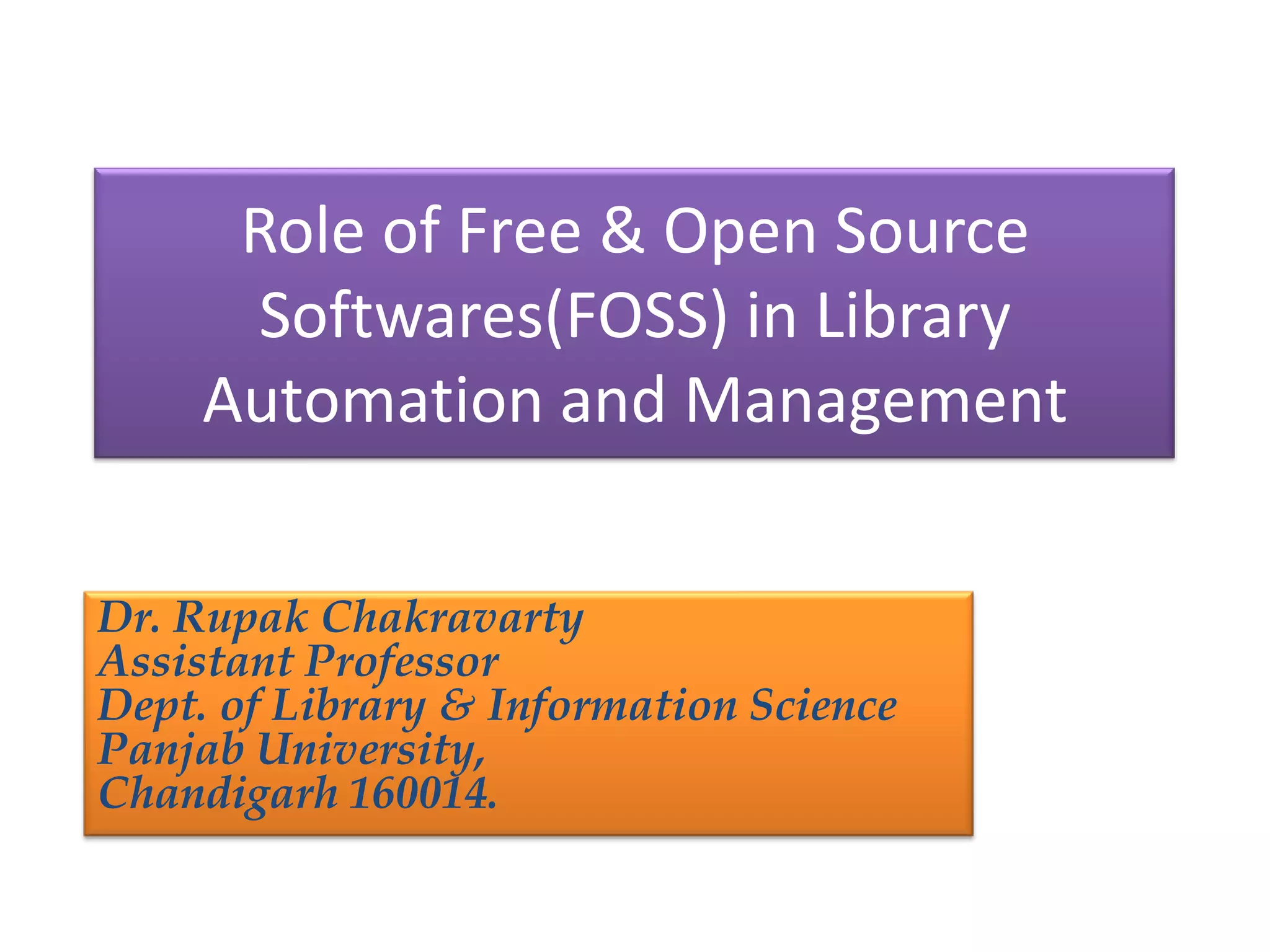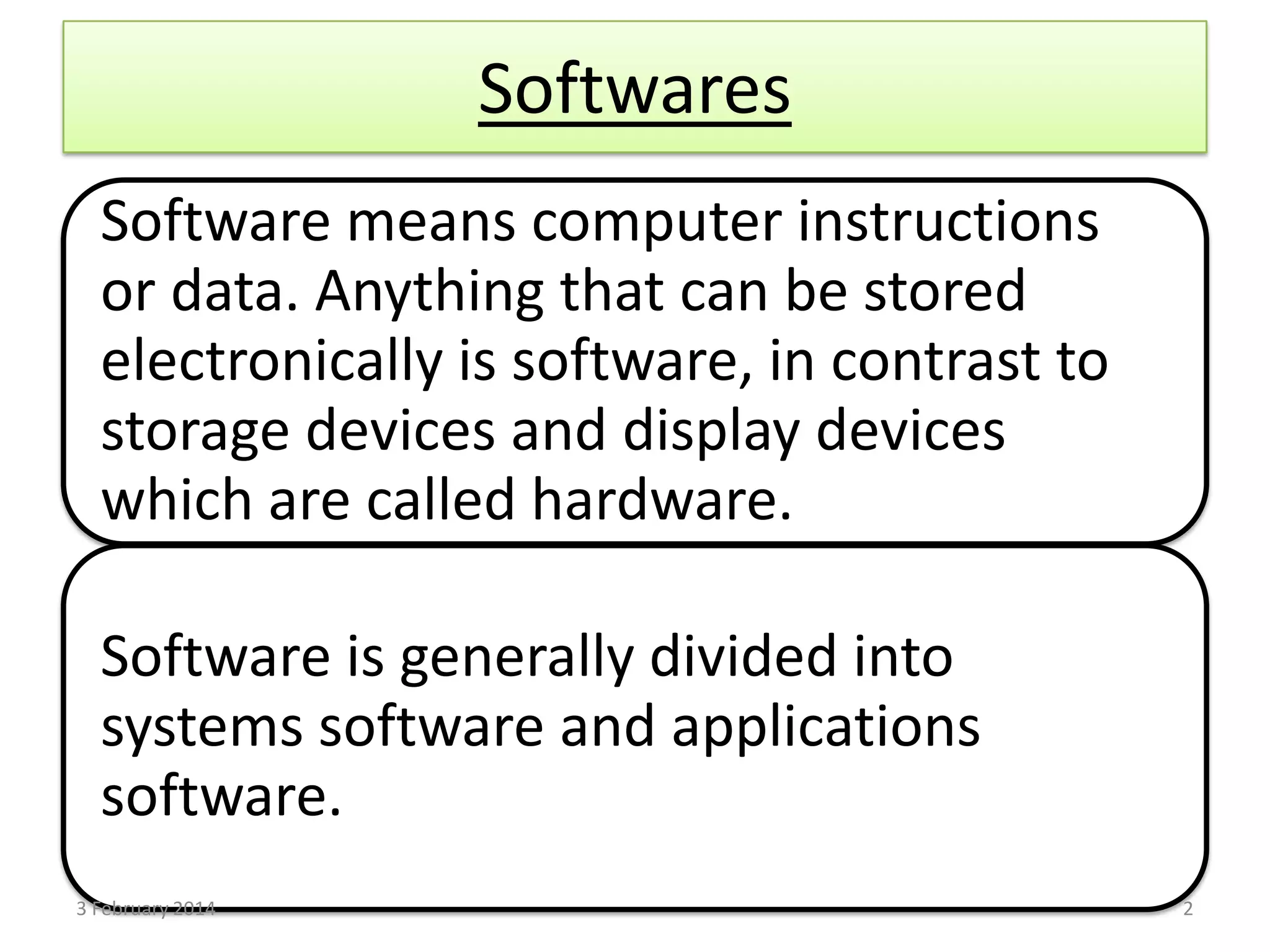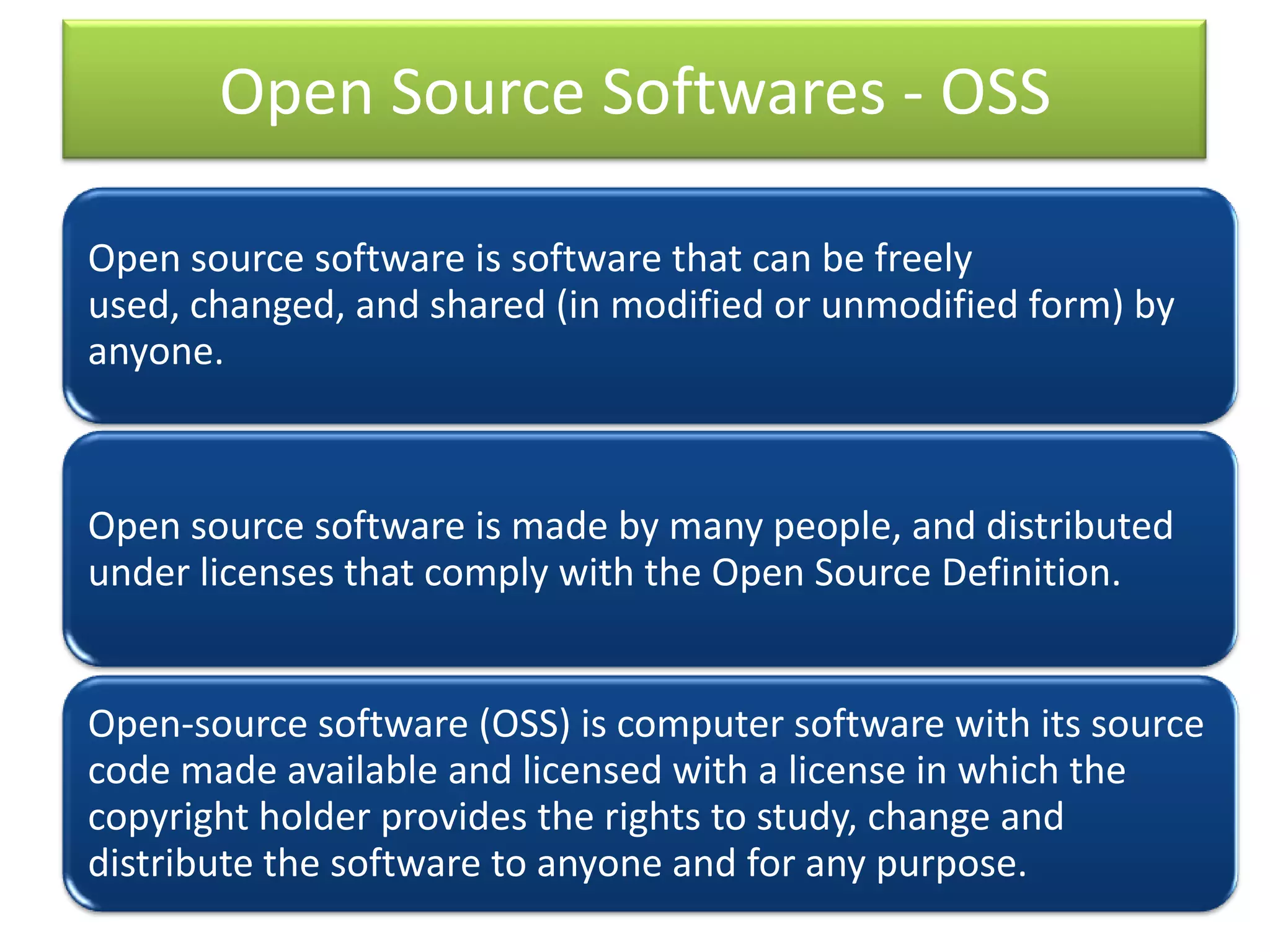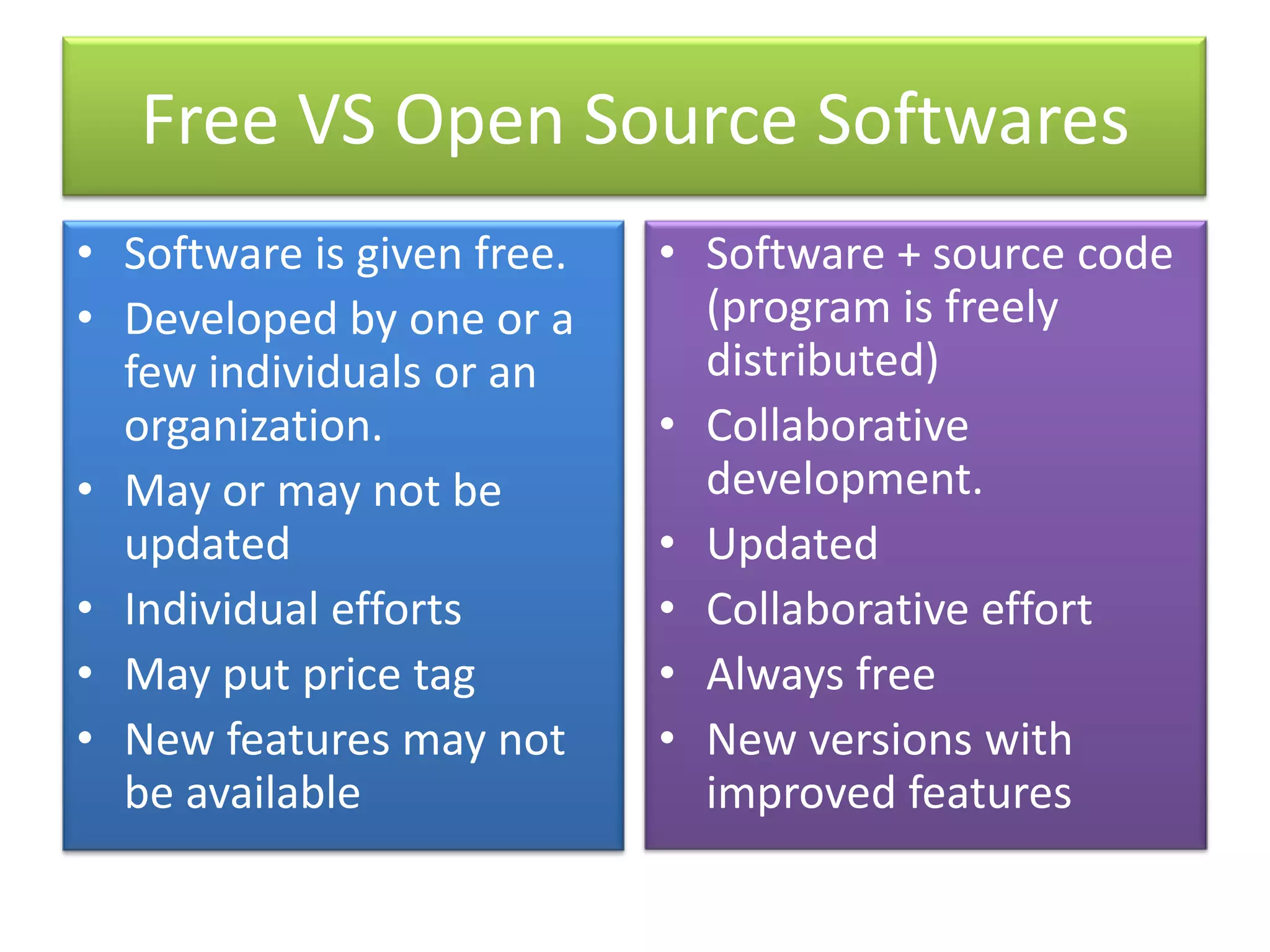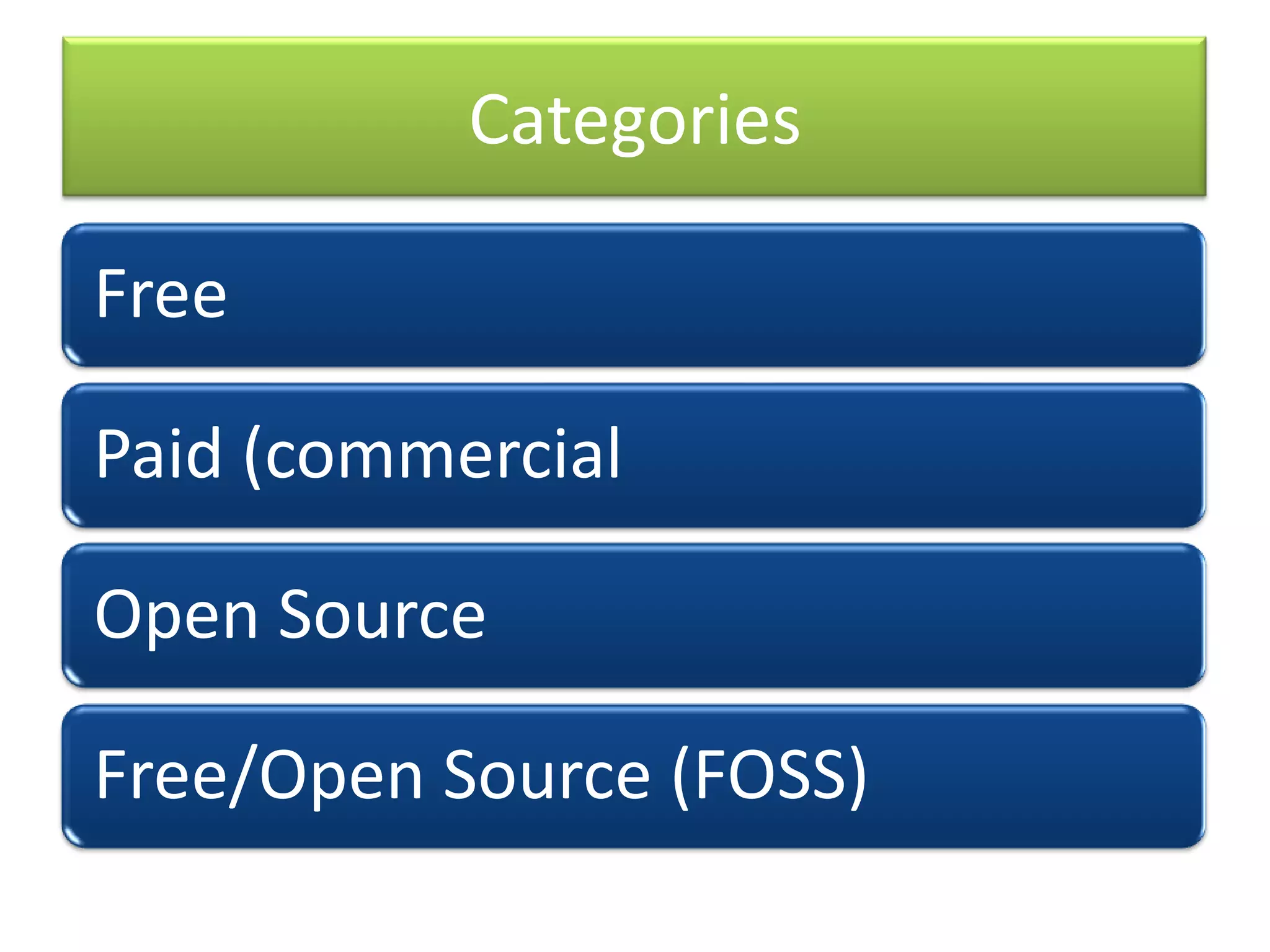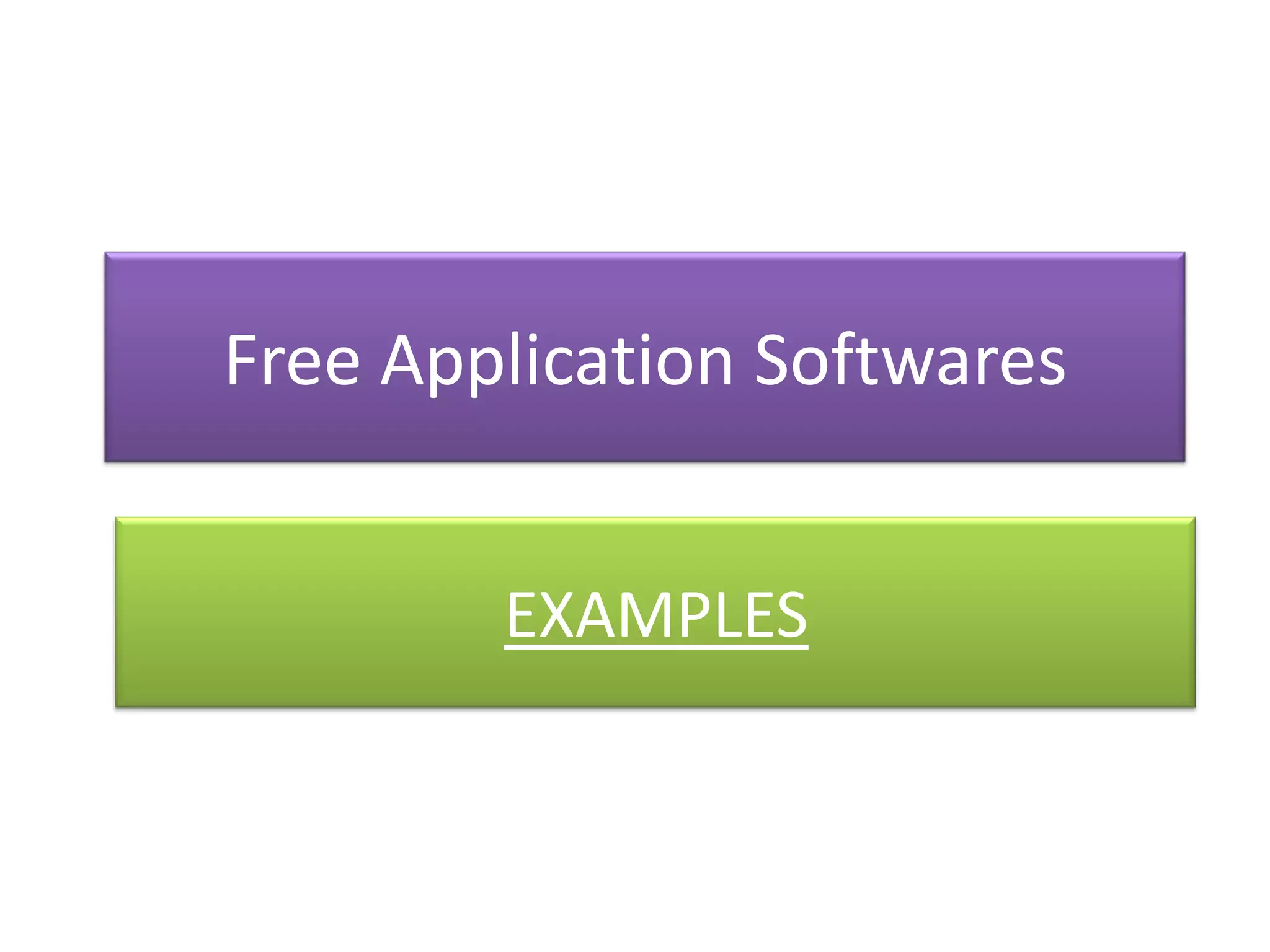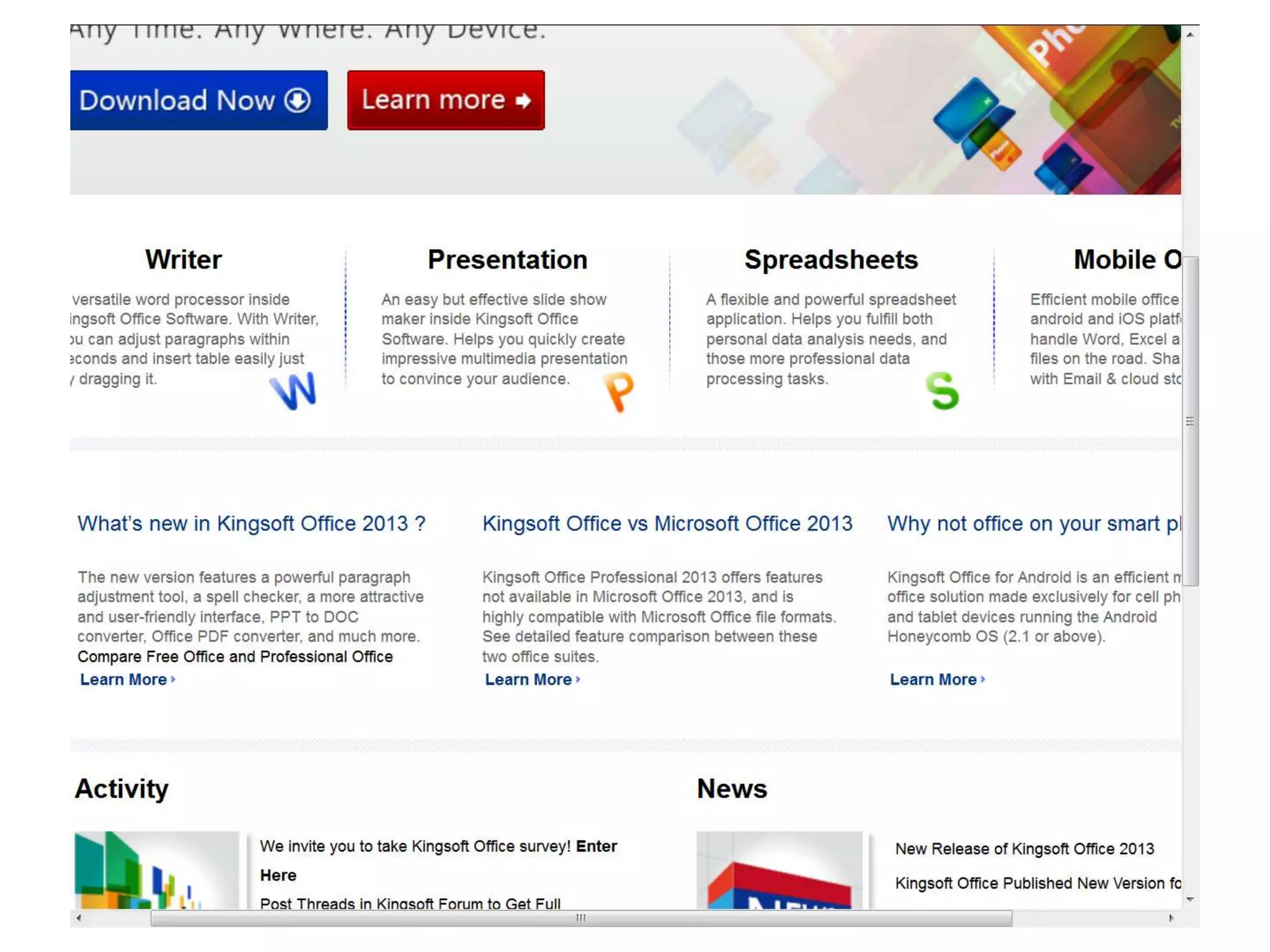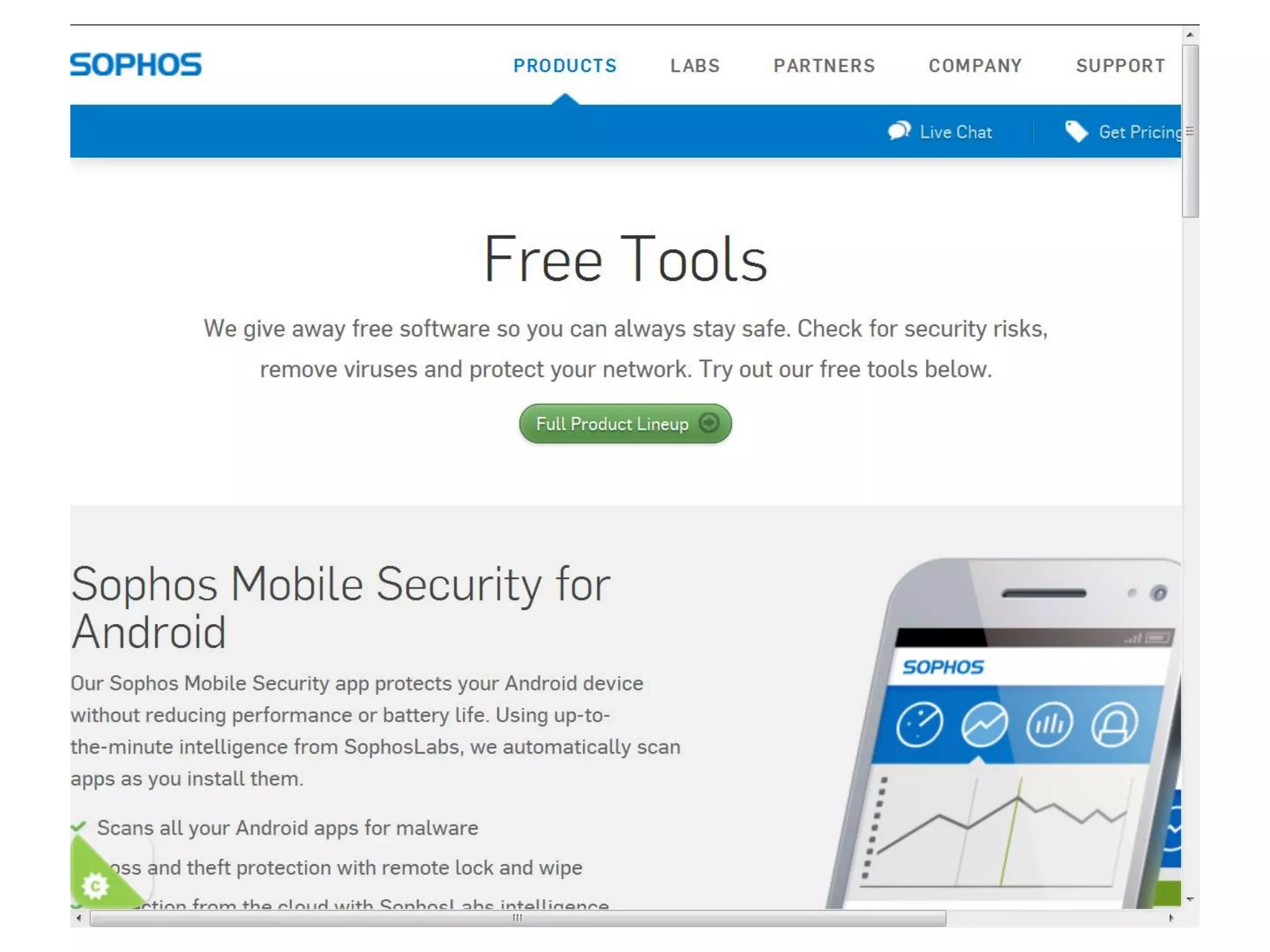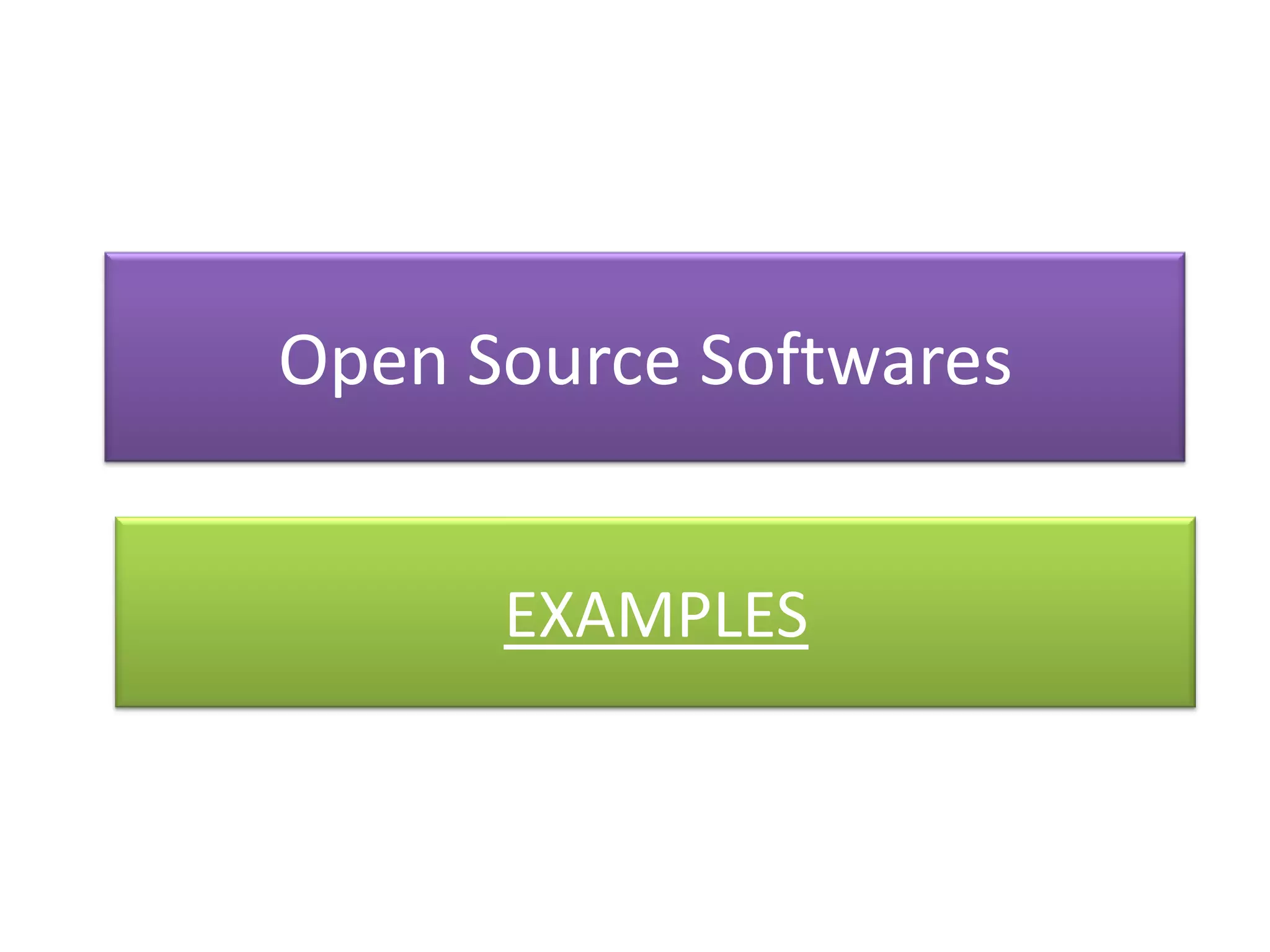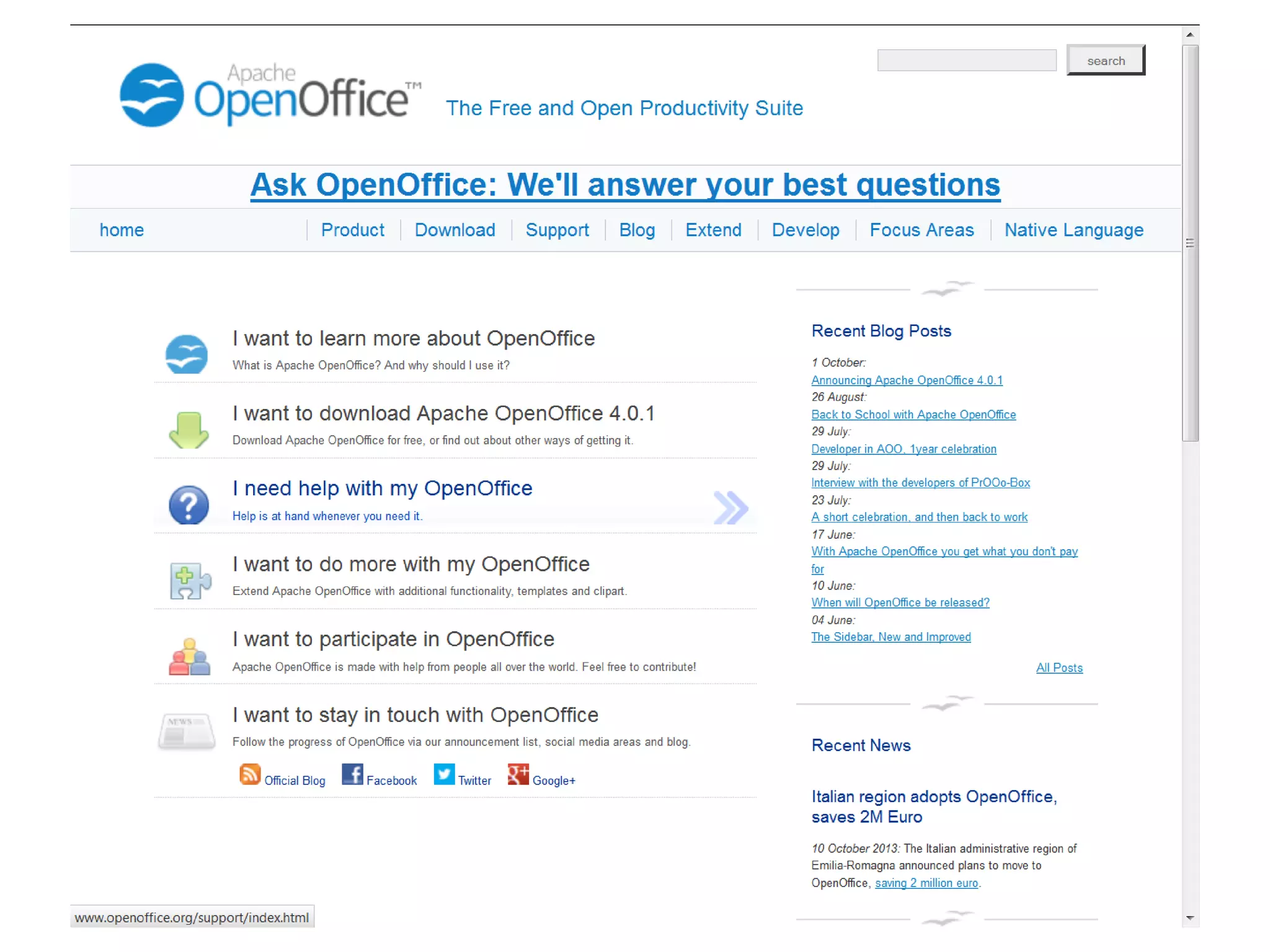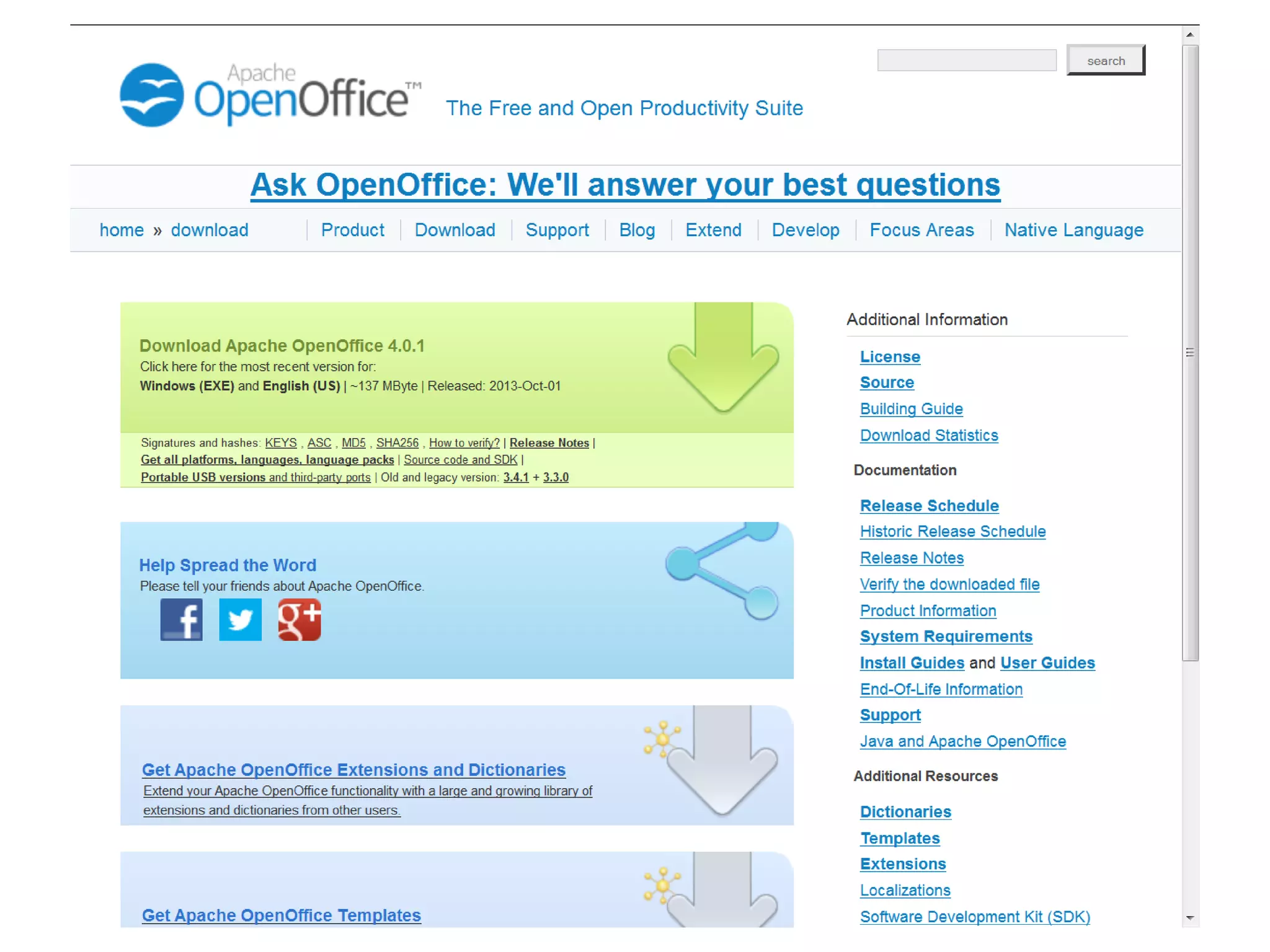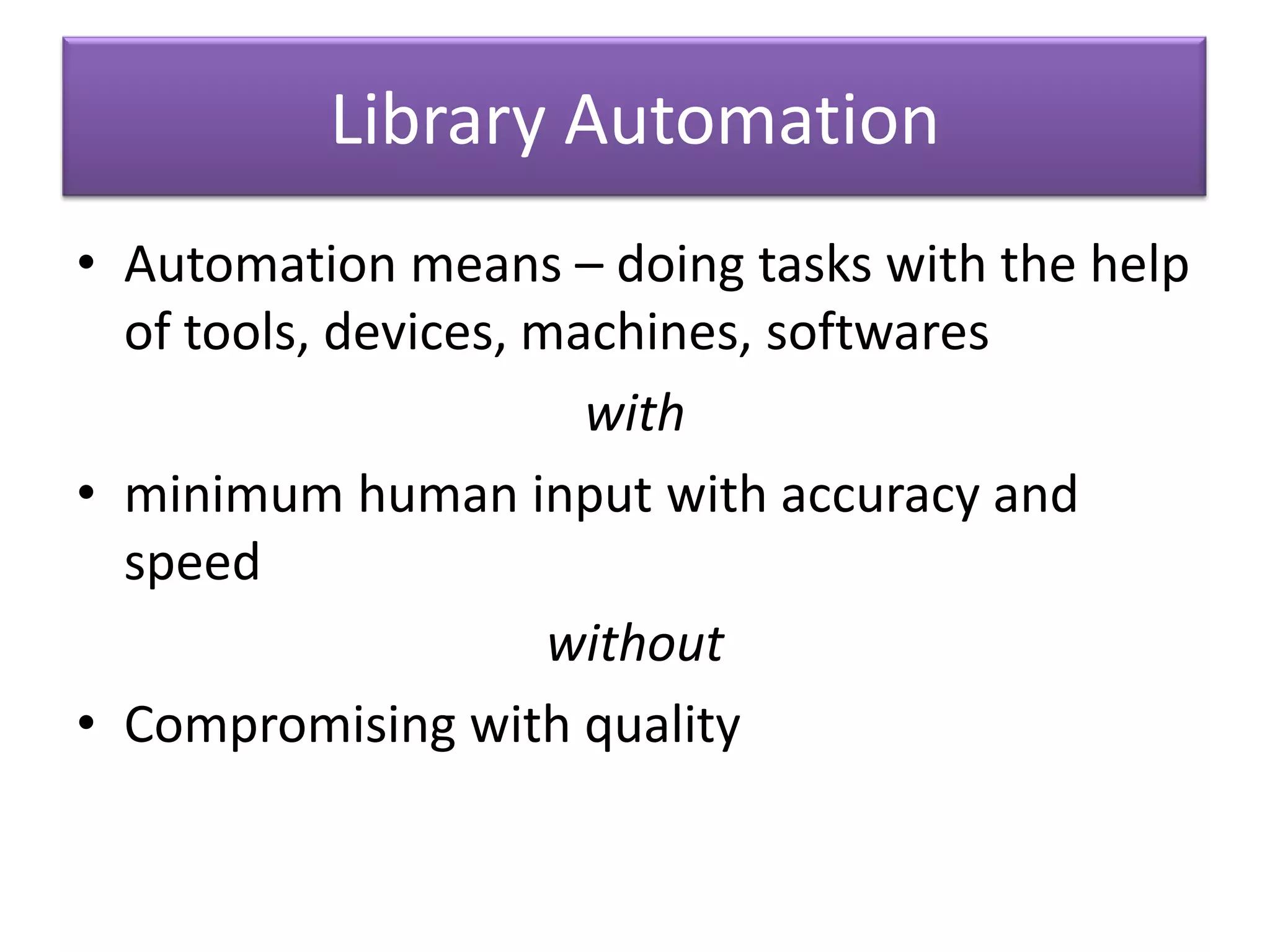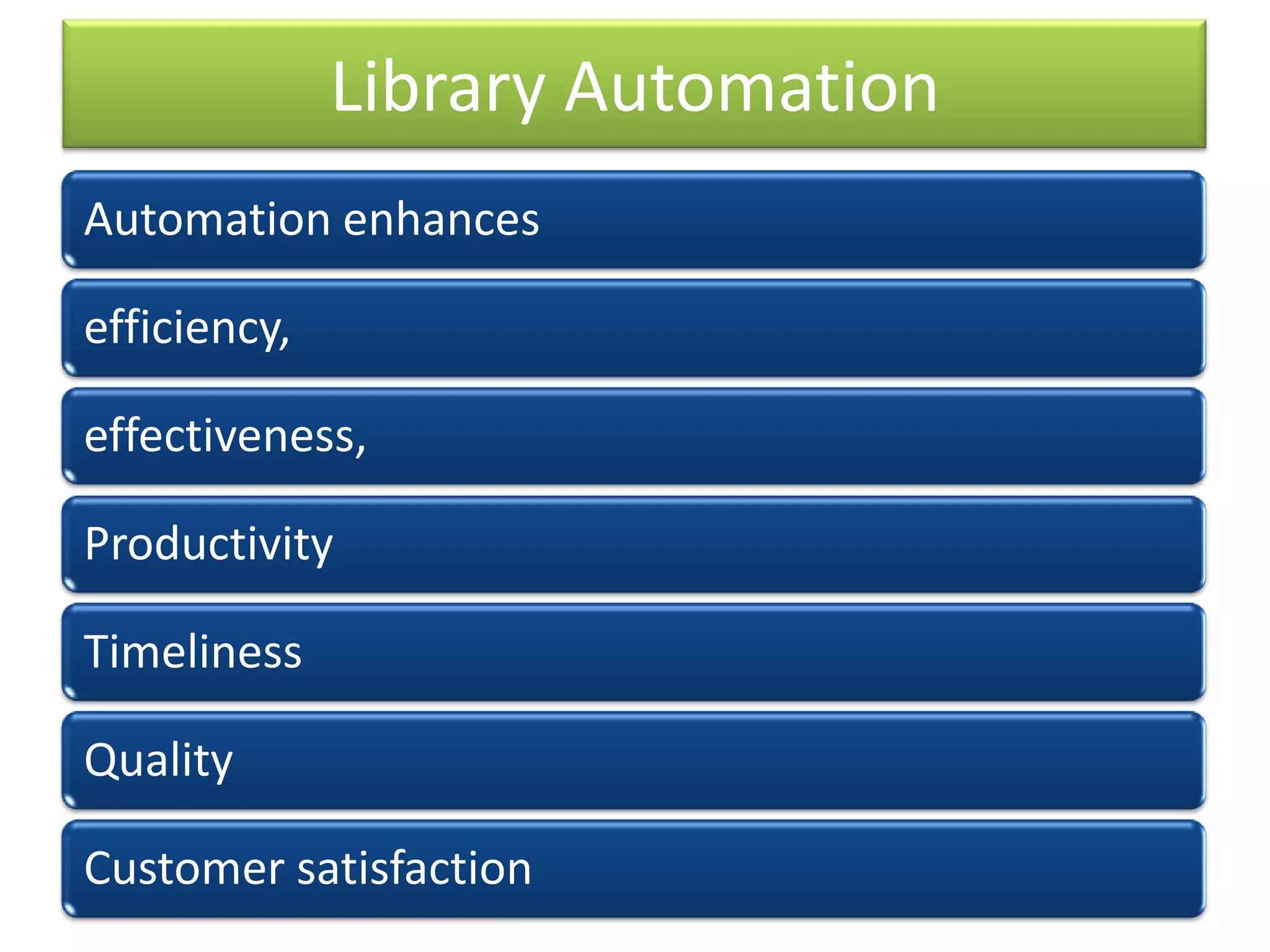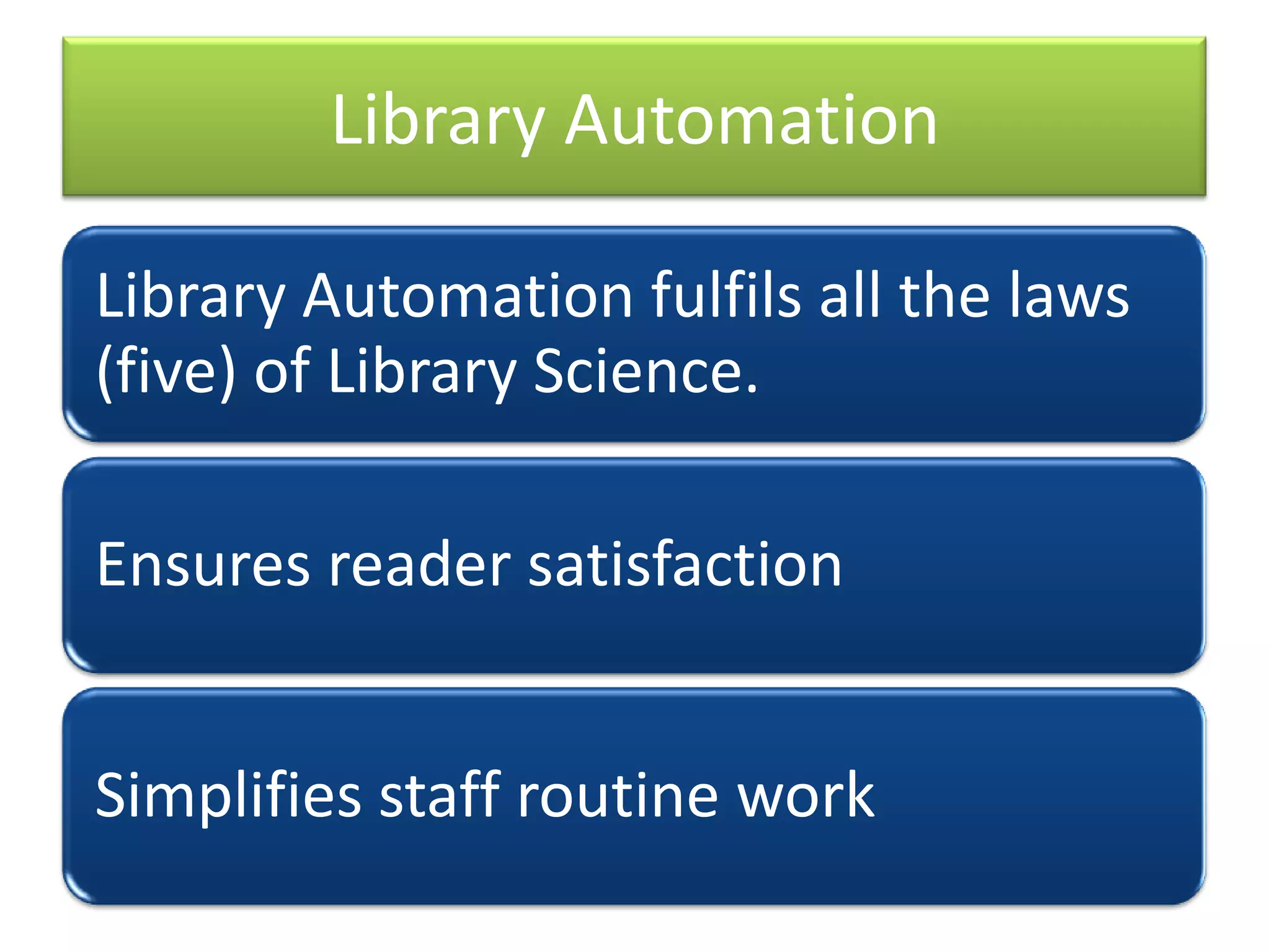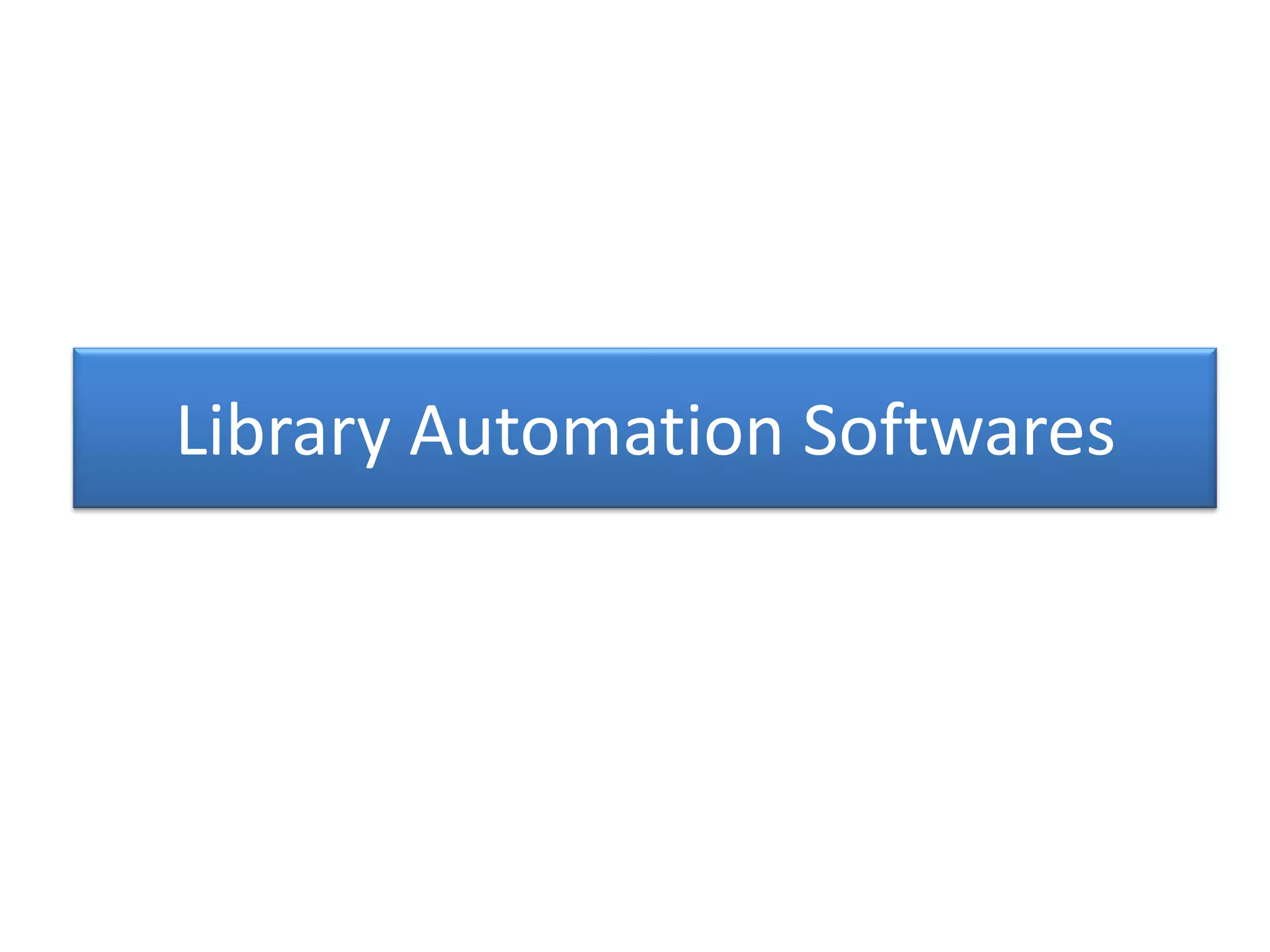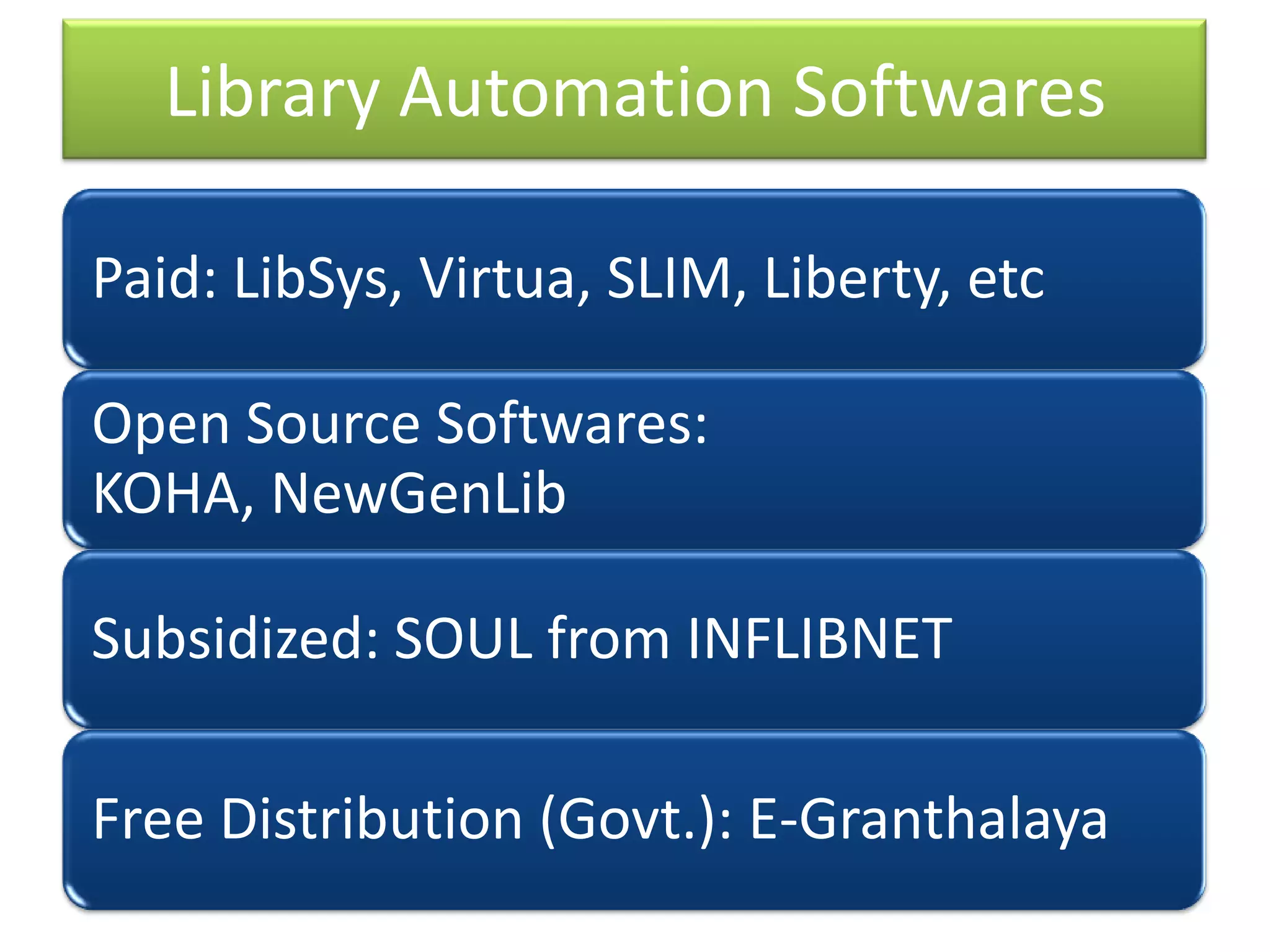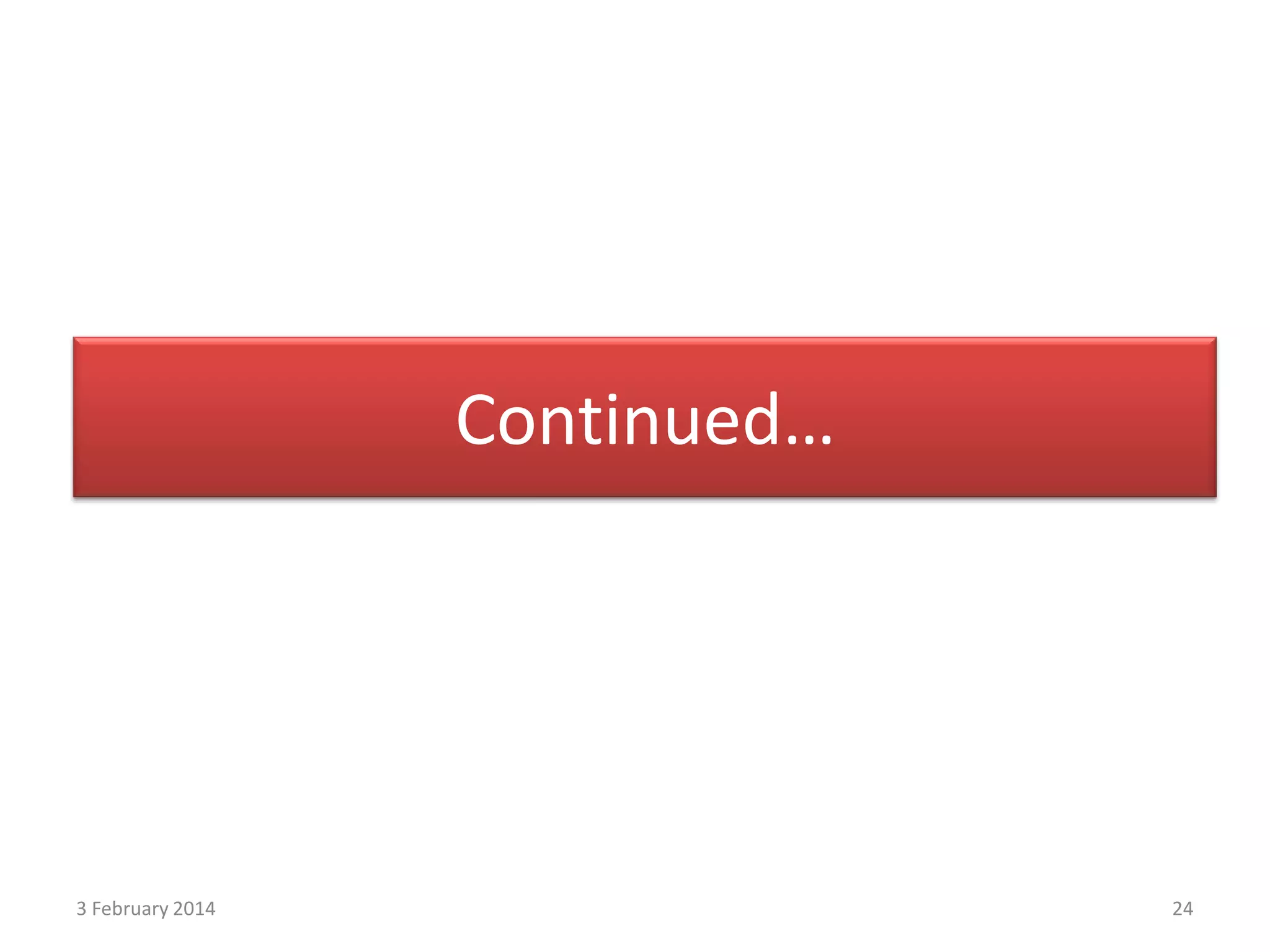This document discusses the role of free and open source software (FOSS) in library automation and management. It defines software, systems software, and applications software. It explains that free software is software that is freely available to end users at no cost, but may not be updated or improved over time. Open source software is software where the source code is openly available and licensed so anyone can study, change, and distribute it for any purpose. Popular open source library automation software includes Koha and NewGenLib, while paid options include LibSys, Virtua, and SLIM. FOSS supports library automation by enhancing efficiency, effectiveness, productivity, timeliness and quality to better satisfy library users.
